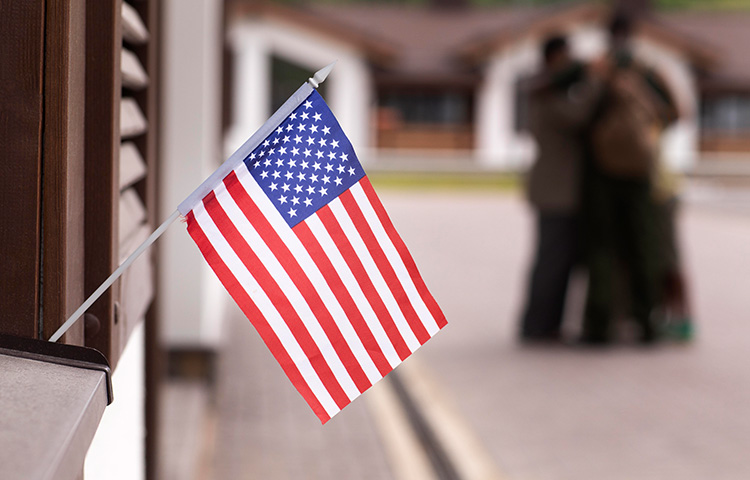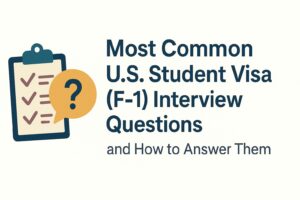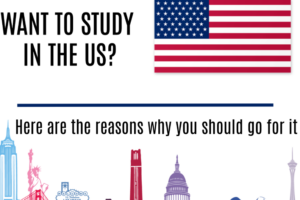Frequently Asked Questions about Studying in the USA

1. How much GPA is required to study in the USA?
There is no single fixed GPA requirement for studying in the USA.
GPA requirements vary depending on the university and academic program you are applying for. However, to be a competitive applicant for undergraduate programs at many universities, you typically need an excellent academic record, preferably with a GPA of 3.0 or higher on a 4-point scale.
Highly selective universities may even expect a GPA closer to 3.7 or higher. Graduate programs generally prefer a minimum GPA of 3.5 and above.
2. How much of a study gap is acceptable in the USA?
The U.S. universities generally allow study gaps and consider each applicant’s circumstances on a case-by-case basis. Gaps of 1-2 years are typically not concerning if you have reasonable explanations related to work, family obligations, health issues, or other pressing reasons.
Larger gaps of 3+ years can raise more questions unless you can provide a compellingly justification for the break. The key is being transparent about how you spent your time productively. Using the gap period to gain relevant skills through jobs, internships, research or community work can offset concerns.
3. How can I study for free in the USA?
While securing completely free education including no tuition or living expenses is extremely competitive, here are some ways to minimize the cost of studying in America as an international student:
➙ Apply for university-based full or partial merit scholarships that are awarded in recognition of your academic achievements
➙ Seek paid research assistant roles or teaching assistantships offering tuition remission
➙ Target grant/scholarship programs from external organizations based on strengths
➙ Enroll in an affordable public university in an area with a lower cost of living
➙ Balance studies with authorized part-time on-campus employment
Pursuing a mix of funded opportunities can make your pursuit of American education very affordable if strategically planned early.
4. Why would you want to go to the USA to study?
There are several compelling reasons to study specifically in the USA:
➙ Pursue world-leading research opportunities under globally respected faculty with access to modern infrastructure
➙ Access innovative education methodology which emphasize practical learning
➙ Immerse in diverse multicultural environment which may also be advantageous professionally
➙ Opportunity to expand mindset around experimentation, critical thinking, and creativity
➙ Establish academic networks offering mentorship support holistically
➙ Improve career growth opportunities by leveraging prestigious degrees and skilled migration pathways
The combination of academic rigor, flexible curriculum, and emphasis on inclusion along with abundant experiential learning resources make the American education system ideally suited to help you achieve your personal and professional goals.
5. Why is studying in the USA better than in other countries?
Some distinct advantages of the U.S. education that makes it a popular choice include:
➙ Unmatched flexibility to customize programs aligning academic, research, and career goals beyond standardized concentrations
➙ Regular integration of practical assignments, labs, internships preparing for real-world job demands
➙ Ability to leverage world-class facilities, datasets, and tools amplifying learning experience and return on your investments (ROI)
➙ Support around experimenting with entrepreneurial ideas and collaborating across disciplines
➙ Diverse campus culture encouraging open exchange of ideas/perspectives for self-growth
➙ Emphasis on critical soft skills like communication, analysis, and problem-solving
While other global study destinations have their own merits, the US approach notably prioritizes holistic skill-building for career readiness amplifying ROI for international applicants.
6. How much money is required to study in America?
The cost of studying in America can greatly vary between $20,000 to $60,000 annually depending on:
➙ Location: Public universities generally cost less than private institutions
➙ Degree Type: Undergraduate vs Graduate degree (Masters/PhD)
➙ Subject Area: While the cost of education generally is similar, some degrees in engineering, sciences, and business may have higher costs.
➙ Lifestyle Factors: Rent, transport, leisure, family financial responsibilities
Many students partially offset overall expenditure through funded research/teaching roles, need or merit-based financial aid from universities plus external scholarship opportunities to ease reliance on family contributions.
7. How to study in the USA with a scholarship?
The key to securing scholarships for studying in America as an international student involves:
➙ Researching funding databases like ScholarDx identifying eligible external scholarship contests
➙ Submitting early scholarship applications to prioritized universities
➙ Building an outstanding academic portfolio from Grade 10 showcasing strengths
➙ Crafting well-written essays emphasizing leadership skills and community impacts
➙ Actively contacting target schools’ admissions and financial aid offices for updated guidance
➙ Maintaining strong letters of recommendation validating potential as a student
➙ Preparing thoroughly for scholarship interviews outlining compelling reasons supporting your funding needs
Pursuing scholarships requires targeting relevant opportunities way in advance with careful planning, discpline, and attention to each application.
8. Do I need SAT to study in the USA?
In recent years, over half of four-year U.S. universities have shifted to test-optional policies allowing students to submit application materials without ACT or SAT scores during COVID-19. However, requirements depend university-wise on factors like:
➙ Competitiveness: More selective colleges still prefer test score data
➙ State Policies: Public state schools aligned to local district decisions
➙ Program Type: Graduate schools may be flexible versus undergraduate schools
So, while high test scores can boost chances, you still have many choices to apply successfully without them given an otherwise robust profile. Reach out to your finalized shortlist universities about current practices for offering scholarships beyond general publicly stated guidelines, to plan accordingly and have realistic expectations.
9. What are the requirements to study in the USA from Nepal?
Key prerequisites for Nepali students to secure admission into the US higher education system include:
➙ Official transcripts and mark sheets reflecting a strong GPA
➙ Satisfactory English language test scores (IELTS or TOEFL)
➙ Valid passport
➙ Completed student visa (F-1) application with visa interview
➙ Financial affidavit documenting available funds for the program duration
➙ Letters of recommendation validating academic and extracurricular strengths
➙ Well-written personal statements aligning backgrounds to programs
➙ Portfolios, test scores, and interviews if mandated by target schools
Meeting university-specific eligibility criteria along with mandated visa protocols ensures successful US education pursuits from Nepal.
10. How many IELTS bands are required for a USA student visa from Nepal?
There is no defined IELTS score range officially required to obtain the F-1 student visa from Nepal to study in America as eligibility depends more on gaining university admission.
However, most undergraduate programs expect an overall IELTS band score between 6.0 to 7.0 with minimum individual sections’ scores being 5.5 or no less than 1 band below overall obtained results.
Selective graduate programs and scholarships may need scores of 6.5 + bands targeting particular language proficiency bars.
Reconfirm English test qualifications directly with target institutions, but ideally aim for IELTS bands between 6.5 and 7.5 to optimize chances given the highly competitive applicant pools seeking American admissions yearly.



